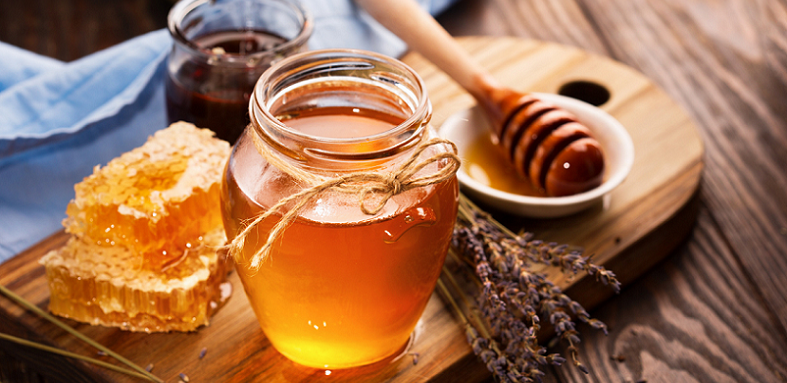
Environmental allergies, triggered by substances like pollen, mold, and dust mites, are increasingly becoming a global concern. With the sneezing, itching, and other discomforts that they bring, finding effective ways to manage them is crucial. Interestingly, what we eat can significantly influence how our bodies respond to these environmental allergens. Here we look at how the immune system interacts with allergens, the importance of micronutrients, anti-inflammatory foods, and the use of personalized diet plans.
Contents
Introduction to Environmental Allergies
Environmental allergies are an increasing concern for many individuals worldwide. They occur when the body’s immune system overreacts to substances in the environment that are typically harmless. For those affected, understanding and managing these allergies is a key aspect of maintaining good health and quality of life.
One area that is gaining attention as a significant factor in managing environmental allergies is nutrition. Through specific dietary choices, it’s possible to strengthen the immune system and reduce the severity of allergic reactions.
Definition of Environmental Allergies
Environmental allergies, also known as seasonal or perennial allergies, are immune responses triggered by exposure to certain substances in one’s surroundings. Unlike food allergies, which are reactions to specific foods, environmental allergies are caused by allergens such as pollen, dust mites, and mold. These allergens are usually harmless for most people, but for individuals with sensitized immune systems, exposure can lead to symptoms such as sneezing, nasal congestion, itchy eyes, and asthma.
Common Types of Environmental Allergies
There are several types of environmental allergies, and understanding each can help individuals tailor their management strategies more effectively. Some common types include:
- Pollen Allergy: Often associated with seasonal changes, pollen allergies are caused by airborne pollen from trees, grasses, and weeds. Symptoms typically include sneezing, runny nose, and itchy eyes.
- Mold Allergy: Mold allergies are triggered by mold spores and can occur both indoors and outdoors. They often cause symptoms similar to pollen allergies but can also lead to skin rashes and asthma in severe cases.
- Dust Mite Allergy: These allergies are caused by tiny creatures called dust mites that are found in house dust. Symptoms may include sneezing, runny nose, and difficulty breathing.
- Animal Dander Allergy: This type is triggered by proteins found in the skin, saliva, and urine of furry pets, particularly cats and dogs. Symptoms are similar to other environmental allergies, with the addition of skin reactions in some cases.
The Growing Concern of Environmental Allergies Worldwide
Environmental allergies are a growing global issue. Changes in climate, urbanization, and lifestyle have contributed to an increase in the prevalence of allergies in recent years. Additionally, the intensity and duration of pollen seasons have increased, leading to more severe symptoms for allergy sufferers. This escalating concern requires innovative approaches to allergy management, including a closer look at nutritional strategies [1].

Understanding Environmental Allergies
Before diving into the nutritional strategies that can help manage environmental allergies, it’s essential to understand what these allergies are and how they affect the body. The immune system plays a central role in allergic reactions.
The Immune System and Allergic Responses
Our immune system is designed to protect us from harmful substances like bacteria and viruses. However, in the case of allergies, the immune system mistakenly identifies harmless substances as threats and mounts a response against them. This response leads to the symptoms we associate with allergies, such as sneezing and itching [2].
Basics of the Immune System
The immune system is made up of a network of cells, tissues, and organs that work together to defend the body against harmful invaders. It has two main components: the innate immune system, which provides general defense against pathogens, and the adaptive immune system, which targets specific pathogens and remembers them for future encounters. The adaptive immune system is the one primarily involved in allergies.
How Allergic Reactions Occur
In people with environmental allergies, the immune system becomes sensitized to certain substances in the environment. When these individuals are exposed to these allergens, their immune system overreacts. The body produces antibodies called Immunoglobulin E (IgE), which bind to the allergen. This binding causes immune cells to release chemicals like histamine, which lead to the symptoms of an allergic reaction.
Common Environmental Allergens
There are several common allergens in the environment that can trigger allergic reactions. These allergens can be inhaled, come into contact with the skin, or be present in the air [3].
Pollen
Pollen is one of the most common environmental allergens. It is a fine powder released by trees, grasses, and weeds to fertilize other plants. When inhaled, pollen can cause allergic reactions in sensitized individuals. Common symptoms include sneezing, runny or stuffy nose, itchy or watery eyes, and coughing.
Mold
Mold consists of tiny fungi that can grow on damp surfaces. Mold releases spores into the air, which can be inhaled and cause allergic reactions in some people. Symptoms of mold allergy are similar to those of pollen allergy but can also include skin rashes and shortness of breath.
Dust Mites
Dust mites are tiny creatures that thrive in house dust. They feed on dead skin cells and are commonly found in bedding, carpets, and upholstered furniture. Allergic reactions to dust mites can include sneezing, runny nose, itching, and asthma symptoms.
Animal Dander
Animal dander refers to tiny flakes of skin shed by animals with fur or feathers. Some people are allergic to animal dander, and exposure can lead to symptoms similar to those caused by other environmental allergens. Additionally, proteins in an animal’s saliva or urine can also cause allergic reactions.
Chemicals
Some individuals are sensitive to chemicals found in everyday products like cleaning agents, perfumes, and pesticides. This type of allergy is known as multiple chemical sensitivity (MCS) and can cause a range of symptoms, including headaches, fatigue, nausea, and skin rashes.

The Role of Nutrition in Supporting the Immune System
Having explored the nature of environmental allergies and the role of the immune system in allergic reactions, it’s important to recognize the profound connection between nutrition and immune health. Our dietary choices can either bolster the immune system or leave it more vulnerable.
The Link Between Nutrition and Immune Function
Nutrition is a fundamental pillar of immune health. The nutrients we consume through our diet are critical for the development, maintenance, and proper functioning of the immune system. A balanced diet with a variety of vitamins, minerals, and other nutrients ensures that the immune system has the resources it needs to ward off infections and moderate allergic reactions. Conversely, nutritional deficiencies can impair immune function, making the body more susceptible to infections and possibly exacerbating allergy symptoms [4].
Micronutrients Essential for Immune Health
There are several micronutrients – vitamins and minerals – that are particularly important for the immune system. Ensuring adequate intake of these nutrients can support immune function and may help in moderating the symptoms of environmental allergies.
Vitamins A, C, D, and E
Vitamin A is essential for the maintenance of skin and mucosal tissues, which are the body’s first line of defense against pathogens. Vitamin C is an antioxidant that supports the function of immune cells and enhances their ability to protect against infections. Vitamin D plays a critical role in modulating the immune response and has been linked to a lower risk of allergies. Vitamin E is an antioxidant that helps protect cells from damage and supports a healthy immune response.
Zinc
Zinc is a mineral that is crucial for the development and function of immune cells. It is involved in many metabolic processes and helps maintain the integrity of the skin and mucosal membranes.
Selenium
Selenium is an antioxidant that helps to protect cells from oxidative damage. It also supports the immune system by enhancing the production of immune cells and promoting their proper functioning.
Iron
Iron is essential for the production of hemoglobin, which carries oxygen in the blood. It also plays a role in the development and differentiation of immune cells.
The Gut-Immune System Connection
The gut is not only crucial for digestion but is also a major component of the immune system. The gut microbiota, which is the community of microorganisms living in the intestines, interacts with the immune system and plays a role in its regulation [5].
Probiotics and Prebiotics
Probiotics are beneficial bacteria that can be consumed through certain foods or supplements. They can help maintain a healthy balance of gut bacteria, which is important for immune function. Prebiotics, on the other hand, are fibers that serve as food for beneficial bacteria. Together, they can help to maintain a healthy gut environment.
The Role of Gut Microbiota in Allergic Responses
The gut microbiota can influence the immune system’s response to allergens. A diverse and balanced gut microbiota is associated with a more modulated immune response, which may be less likely to overreact to environmental allergens. On the other hand, an imbalance in gut microbiota can be associated with an increased risk of allergic diseases.

Anti-Inflammatory Foods and Their Benefits
As we’ve seen, nutrition plays a pivotal role in supporting the immune system and moderating its responses. Another critical aspect to consider is the impact of food on inflammation. Inflammation is a natural part of the immune response, but when it becomes chronic or excessive, it can contribute to allergy symptoms. Fortunately, certain foods have anti-inflammatory properties that can be beneficial in managing environmental allergies.
Understanding Inflammation
Inflammation is the body’s natural response to injury or infection. It is a complex process involving various cells and chemicals in the body. While acute inflammation is a protective response, chronic inflammation can be harmful and is associated with various diseases, including allergies. Environmental allergens can trigger inflammatory responses, leading to the common symptoms of allergies.
The Concept of an Anti-Inflammatory Diet
An anti-inflammatory diet is based on consuming foods that can reduce inflammation and avoiding or limiting foods that promote inflammation. This type of diet is rich in fruits, vegetables, nuts, whole grains, and healthy fats. It may also include moderate amounts of lean protein. By reducing inflammation, an anti-inflammatory diet can alleviate the symptoms of allergies and improve overall health [6].
Anti-Inflammatory Foods to Include in Your Diet
There are several foods known for their anti-inflammatory properties. Including these foods in your diet may help to mitigate the symptoms of environmental allergies.
Fatty Fish
Fatty fish like salmon, mackerel, sardines, and albacore tuna are rich in omega-3 fatty acids, which have potent anti-inflammatory effects. Omega-3 fatty acids can reduce the production of inflammatory chemicals and are beneficial for immune health.
Nuts and Seeds
Nuts such as almonds and walnuts, as well as seeds like flaxseeds and chia seeds, are also high in omega-3 fatty acids. They are a good source of antioxidants and other nutrients that can help reduce inflammation.
Fruits and Vegetables
Fruits and vegetables are rich in antioxidants, vitamins, and minerals that can combat inflammation. Berries, cherries, oranges, and leafy green vegetables are particularly effective.
Olive Oil
Olive oil is a central component of the Mediterranean diet, which is known for its anti-inflammatory properties. It contains oleic acid and antioxidants that can reduce inflammatory markers.
Turmeric and Ginger
Turmeric contains curcumin, a compound with strong anti-inflammatory properties. Ginger also has similar effects and can help reduce symptoms of allergies like nasal congestion and throat irritation.
Green Tea
Green tea is rich in antioxidants called catechins, which have anti-inflammatory effects. It can be a beneficial addition to an anti-inflammatory diet.
Whole Grains
Whole grains like oats, brown rice, and whole wheat are high in fiber, which can help reduce inflammation by promoting a healthy balance of gut bacteria.
Foods to Avoid
In addition to incorporating anti-inflammatory foods, it is equally important to limit or avoid foods that can promote inflammation. These include processed foods, sugary drinks, and excessive consumption of red meat and refined carbohydrates.
Foods and Nutrients That May Exacerbate Environmental Allergies
While there are foods that can support the immune system and reduce inflammation, it’s also important to recognize that some foods and nutrients may exacerbate environmental allergies in certain individuals. Being aware of these foods and monitoring their intake can be an essential part of managing allergies effectively.
Foods That Can Trigger Inflammation
Some foods are known to promote inflammation, which can worsen the symptoms of environmental allergies. Including these foods in the diet can lead to increased inflammation and may exacerbate the body’s response to environmental allergens [7].
Processed Foods
Processed foods often contain additives, preservatives, and artificial ingredients that can promote inflammation. They are also often high in unhealthy fats and sugars, which can contribute to inflammation.
Sugary Drinks and Snacks
Excessive sugar intake can lead to increased inflammation. Sugary drinks and snacks, such as sodas, candies, and pastries, can exacerbate allergy symptoms by promoting an inflammatory response.
Excessive Consumption of Red Meat
Red meat, especially when consumed in large quantities, can promote inflammation due to its high content of saturated fats.
Alcohol
Alcohol, particularly in excessive amounts, can lead to inflammation and may exacerbate allergy symptoms.
Dairy Products
For some individuals, dairy products can promote mucus production and may worsen respiratory symptoms associated with environmental allergies.
Cross-Reactivity: Pollen Food Allergy Syndrome
Cross-reactivity is a phenomenon where the proteins in certain foods are similar to the proteins in allergens like pollen. In individuals with environmental allergies, consuming these foods can cause the immune system to react as if it is being exposed to environmental allergens, leading to a worsening of symptoms. This is often referred to as Pollen Food Allergy Syndrome (PFAS) or Oral Allergy Syndrome (OAS) [8].
Common Cross-Reactive Foods
Certain fruits, vegetables, and nuts are more likely to cause cross-reactivity in individuals with pollen allergies. For example, individuals with birch pollen allergies may react to apples, carrots, and hazelnuts, while those with ragweed allergies may react to melons and bananas.
Managing Cross-Reactivity
Understanding and identifying which foods cause cross-reactive responses is crucial. Individuals with environmental allergies may need to avoid or limit the intake of certain foods, especially during allergy season. Cooking or peeling the foods may also reduce the cross-reactivity in some cases.
Importance of Personalized Nutrition Guidance
Given the complexity of allergies and the variability in individual responses to foods, it is essential to approach dietary changes with care. Consulting a healthcare provider or registered dietitian with experience in allergies can be invaluable in guiding personalized nutrition strategies for managing environmental allergies.
References
[1] How Changing Your Diet May Improve Seasonal Allergies
[2] Five diet changes to reduce seasonal allergies
[3] Environmental Allergies
[4] Does diet influence seasonal allergies?
[5] What Foods to Avoid if You Have Pollen Allergies
[6] Can What We Eat Affect Seasonal Allergies?
[7] 7 Best Foods for Seasonal Allergies
[8] What Foods Are Bad for Allergies?







